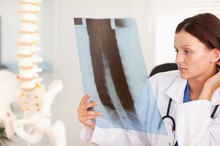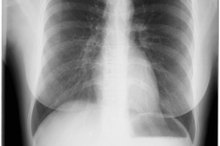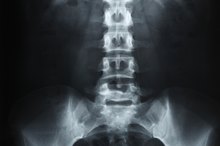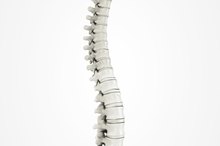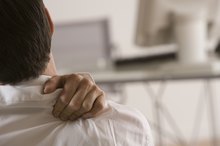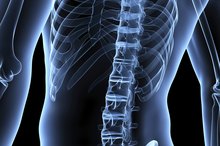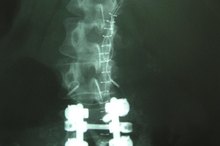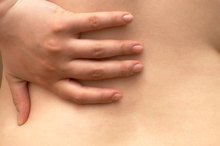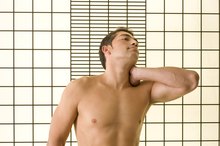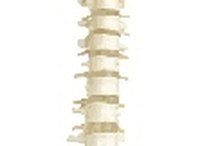What Is a Eccentric Disc Bulging?
Eccentric disk bulging is one of several major symptoms of degenerative spine disease 1. A herniation of the disk, bulging is the least severe occurrence of disk distortion.
If you are experiencing serious medical symptoms, seek emergency treatment immediately.
Types of Bulging
There are three major types of disk herniation: bulge, protrusion, and herniation. Unlike the latter two types, disk bulge is classified by symmetric compression of the disk as measured from the spine core. As a contrast, an eccentric protrusion occurs when the disk material bulges outward from the center in a specific direction, and less than three millimeters. Bulges in excess of three millimeters of the spine are classified as herniated.
- There are three major types of disk herniation: bulge, protrusion, and herniation.
- As a contrast, an eccentric protrusion occurs when the disk material bulges outward from the center in a specific direction, and less than three millimeters.
Description
What Are the Treatments for a Vertebral Hemangioma?
Learn More
Disk bulge can usually be identified using magnetic resonance imaging. Due to the construction and thickness of the spine, most disk protrusion issues occur posterolaterally, or away from the center of the spine thickness, forcing the disk material to be squeezed either sideways or backward.
Occurrence
The deterioration of disk material is considered a normal part of the human aging process. Disk issues most commonly begin to appear after age 40. Disk bulging, however, does not always manifest itself via physical pain. In fact, only 28% of those complaining of back pain actually suffer a form of bulging.
- The deterioration of disk material is considered a normal part of the human aging process.
- In fact, only 28% of those complaining of back pain actually suffer a form of bulging.
Pain Profile
Symptoms of Thoracic Spine Problems
Learn More
As noted, pain is not always the primary alarm with disk herniation cases. When it is, the pain is usually in the lower back (lumbar) region, with 90% involving the disk between L4 and L5, or between L5 and S1. The lumbar region accounts for 50% of spinal motion for twisting, bending and sitting. As a result, it is the leading area of disk degeneration. This degeneration can be experienced via back pain or radial pain involving the spinal nerve system. Disk pain caused by nerve impingement is characterized by pain radiation into the lower body, as well as weakness. The patient may encounter numbness in the thigh, calf, knee or foot.
- As noted, pain is not always the primary alarm with disk herniation cases.
- When it is, the pain is usually in the lower back (lumbar) region, with 90% involving the disk between L4 and L5, or between L5 and S1.
Treatment
Repairing or improving the symmetry of the disk structure does not always require surgery. Conservative medical treatments such as therapy result in a significant number of patients experiencing disk reduction and symptom relief.
Related Articles
References
Writer Bio
Colorado-based Len Taylor has been a professional writer since 1974. His published work includes novels, non-fiction, news and commentary articles, product launch materials, human interest and sports stories, user manuals and technical documents. His work has appeared in many publications, including "Sports Illustrated for Kids" and the "Guinness Book of Sports Records."
